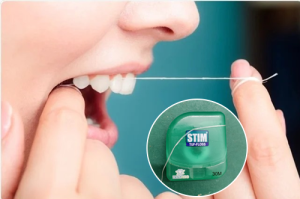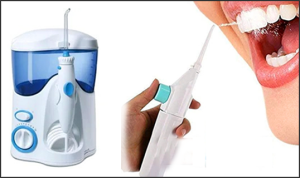Interdental Flossing

Dental Floss is a chord of thin filament used in interdental cleaning to remove food and dental plaque from between teeth or places a toothbrush has difficulty reaching or is unable to reach.
Benefits of regular flossing:
- Prevents food from decaying in between the teeth which in turn helps prevent bad breath.
- Reduces the risk of inter-proximal decay which in turn prevents the cavity formation and gum diseases.
- Evidence also suggests that regular brushing and flossing reduces the risk of heart diseases.
Brushing vs Flossing:
Brushing and flossing are both important for the oral health. Flossing and brushing isn’t an either or equation for achieving optimum results. The goal of flossing and brushing is to remove plaque build-up. Plaque consists of active colonies of destructive bacteria which basically grows on left over food and produces acid which in turn produces cavities and bad breath.
- Brushing only removes plaque from the front and back surface of your teeth whereas floss removes the plaque from in-between the teeth.
- Failure to remove plaque from inter-proximal areas cause gum disease such as gingivitis and periodontitis.
Factors considered at the time of choosing the dental floss
- Tightness of the contact area determines the type of the floss to be used.
- The contour of the gingival tissue.
- Space between the teeth.
- User preference.
Types of Floss
1. Waxed
- Wax floss makes it easier to slide between the teeth.
- Tends to break less often and is sturdier than the unwaxed floss.
- It is harder to fit into tight contact area.
2. Unwaxed
- It is thinner than the waxed floss.
- This floss is tough to slide between the teeth.
- It breaks quite often.
3. Water Flosser

- Mechanical device that shoots a focused stream of water in-between teeth.
- Easy to use.
- Effective tool for people who have braces or other dental work where regular flossing is difficult.
- Study show that water flosser is 29% more effective than traditional floss.
Myth: Does Flossing creates gaps in teeth?
Fact: Gaps between teeth is an indication of gingivitis or problems related with the gums. There are various reasons why one may develop gaps between the teeth. One of the reasons is improper flossing. However as long as you floss correctly, flossing will not cause any gaps.
You can schedule a consultation appointment with Dr. Seema Bansal for more informantion.

Nicely explained
Share was informative n thanks for clarifying.
Thankyou Maria
Thankyou Komal
Very well explained.
Thankyou Aastha
Important query.nicely answered
Thankyou Jaya
Nice article Dr. Seema! Very precise and concise.
Two follow-up questions I have –
1. Is there an ideal time to flossing – morning or night?
2. What’s the recommended order – flossing and then brushing, or brushing first followed by flossing?
Hi Neha,
Night time will be a good time for flossing. My recommendation will be first brushing and than flossing.
Thank you so much Seema Ma’am for this necessary information. 🙂
Thankyou Priyanka
Thanks to your article and advise, our family has understood the need of adding dental flossing to our daily brushing habit. Earlier, you had pointed out the importance of tongue scrapping. Brief write-ups and they are all very helpful.
Thankyou Sanjay
Very well explained!
Thankyou Sneha
Thank you as always for this insightful article
Thankyou Garima